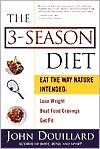
We saw in lesson 21 that feelings can be emotional or physical. For example happy/sad are emotions, hot/cold are physical feelings. This is not surprising because the mind, body, and spirit are connected to one another.
"Like attracts like", is a saying that expresses that the more positive attitudes that we put out into the world the more positive things will come back to us as a result. So if we can redirect our own attitudes to that of being positive and open we will get more happy things back to us. if we can accept ourselves and the negative attitudes and habits that come up in as, but also then let them go quickly, we will avoid more negative things coming our way. We each have the power to shape how our lives will be, positive or negative.
Journal Activity #22: Identify, accept, keep or let go
Copy this in your journal, do the activity and fill in the blanks :
There are Four simple steps that we can do to keep or let go of feelings:
- identify why and what we are feeling
- accept the emotions
- notice where we feel it in our body
- decide to keep or let go
*********************************************
1. Focus on some one that you love, whoever comes to mind first, write their name or initials in the blank:
When I think of _______________________, I feel love.
2. Continue to focus on this person.
When I think of _________________ I also feel these emotions:____________________, ________________, ______________________.
3. Focus on these emotions.
4. When I think of _________________ I notice a feeling in or around my ______________(body part, inside or outside body)
5. Take an action to symbolize keeping these feelings.
The symbolic action that I took to keep these feelings was ______________________________________________________.
6. Focus on someone that makes you uncomfortable, whoever comes to mind first, write their name or initials in the blank:
When I think of _______________________, I feel discomfort.
7. Continue to focus on this person.
When I think of _________________ I also feel these emotions:____________________, ________________, ______________________.
8. Focus on these emotions.
When I think of _________________ I notice a feeling in or around my ______________(body part, inside or outside body)
9. Take an action to symbolize letting go of these feelings.
The symbolic action that I took to let go was ______________________________________________________.
 What are Nutrients?
What are Nutrients?








